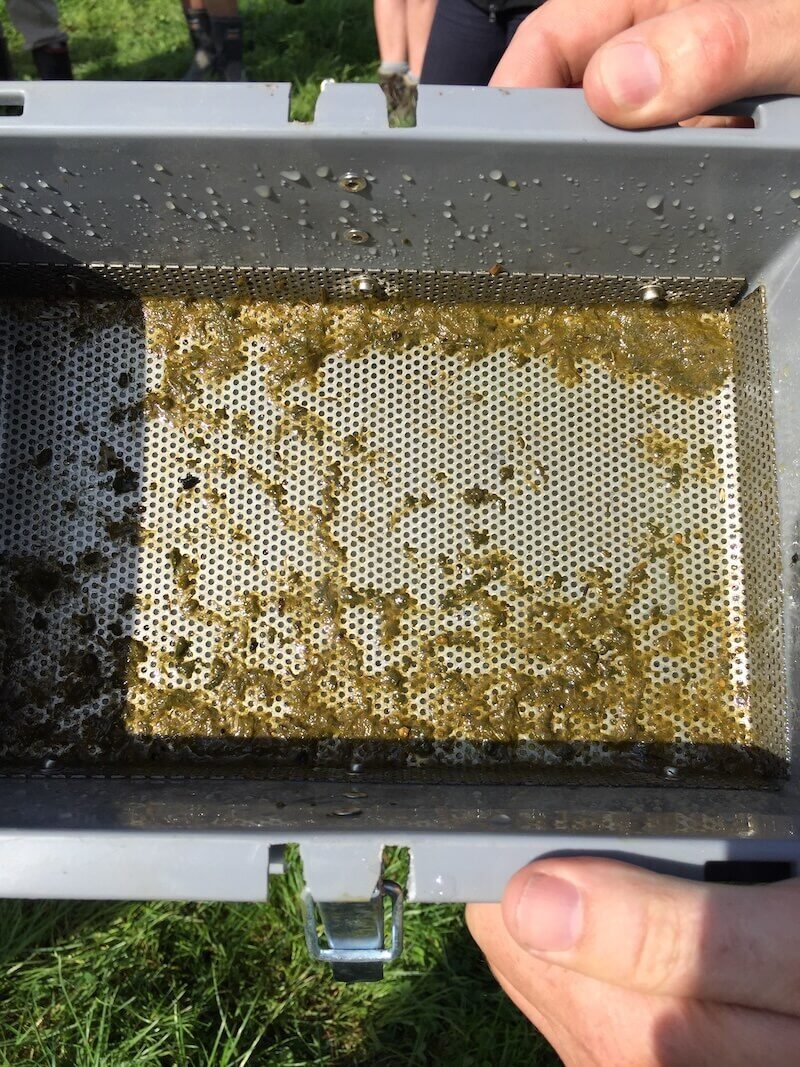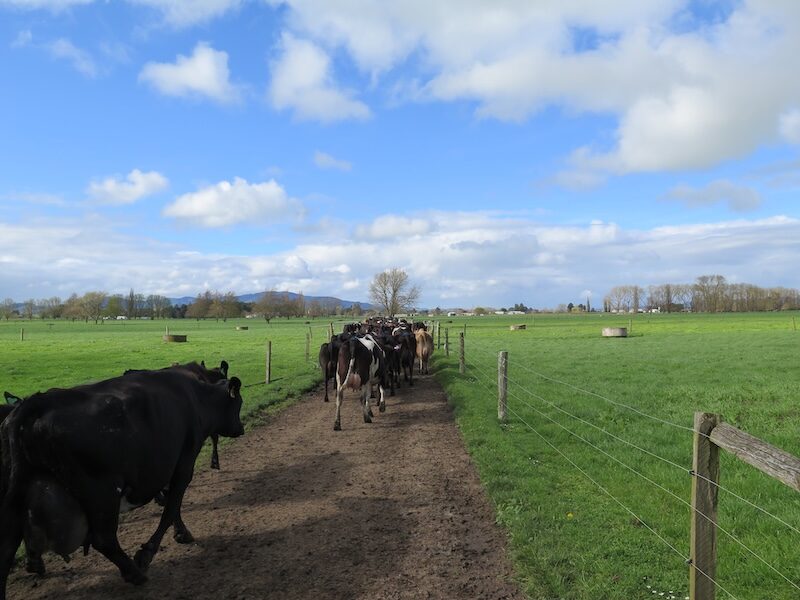Loose Manure and Lameness, how are they linked?
Loose, and often bubbly manure occurs on a lot of farms when pasture undergoes its spring and autumn “flush”. But just because it is common does not mean that it is normal. If we think about what loose or bubbly manure is telling us….. it is that the intestine has had to ferment the feed, meaning it comes out freshly ‘bubbled’. This could be due to:
- Fast rumen transit – feed, especially carbohydrates, haven’t stayed in the rumen long enough to be digested
- Rumen dysfunction – acidosis, or sub-acute ruminal acidosis (SARA) has decreased or changed the microbial population so it cannot fully ferment the feed
- Disease – such as Salmonella or Johnes for example

Providing manure sieving nutrition support with the Nutritech field team.
There are several things that can happen once the intestine starts fermenting feed, the biggest one being inflammation. Part of the inflammatory response is the production of histamine which creates an immune response throughout the body.
So here it is, the link between loose bubbly manure and lameness: These inflammatory responses disrupt blood flow and negatively affect keratin formation in the hoof. All of this then creates weakness at the white line and increases the risk of soft hooves that are prone to physical damage.
One of the challenges in managing nutritionally induced lameness is the time lag between rumen or intestinal insult (gut dysfunction) and clinical signs. Damage to the corium and hoof horn formation may take weeks to manifest as visible lameness.
Take white line disease for example, one of the most common claw horn lesions in New Zealand dairy herds. Often we think it is pressure on that white line – pressure on the yard, mating season, rain and wet tracks that is causing the lame cows. However, time and time again, when we are assisting herds with outbreaks of white line, we look back at nutrition 6-8 weeks prior and see that loose bubbly manure (aka gut dysfunction) was occurring. This likely created a weakness in the hoof at that time, resulting in a number of lame cows several months later as the hoof grew further down.
The same applies for critical trace elements such as copper and zinc. When trace elements are stopped at certain times of the year (e.g. they aren’t fed to dry cows, or during summer), this puts the hoof at risk of damage. We need to remember that the hoof is a live, growing tissue that is constantly affected by the nutrients flowing through the blood at that time. Stopping trace minerals over winter will result in a much weaker hoof hitting the ground at calving.
Prevention Strategies
Good nutrition every day can help reduce the risk of lameness from the inside out. Below are some prevention strategies worth considering.
- Balanced diets with good physically effective (chewable) fibre. This is where our team of nutrition specialists can help with the use of tools such as manure sieves and DietCheck® ration balancing software. Reducing loose bubbly manure and inflammation is the first step and correct nutrition fundamentals are a key to minimising this.
- Levucell®SC and Levucell®SB: These specific live yeast supplements help stabilise rumen pH, reduce lactic acid accumulation, and improve fibre digestion. By enhancing rumen and intestinal function, they lower the risk of sub-acute rumen acidosis and its downstream effects on hoof health.
- Organic Copper and Zinc: These trace minerals are vital for keratin synthesis. Organic forms (e.g., copper and zinc glycinates from the B-TRAXIM® range) offer superior bioavailability compared to inorganic forms. Also, by being attached to glycine, an amino acid, there is better incorporation into hoof tissue. Copper also aids in collagen cross-linking which is essential for robust hoof horn formation.
- Biotin – If copper and zinc are like the bricks, biotin is the mortar, or the glue that holds the hoof together. This is why biotin works particularly well on the white line. Because biotin is a B-vitamin, it also has shown consistent milk production responses which well and truly pay for the product (over 25:1 ROI). In other words, feed biotin for the milk and get a bonus of stronger, healthier hooves!
Lameness in dairy cows is a multifactorial issue, but good nutritional management offers a powerful tool for prevention. If you are interested in a lameness specific custom blend, tailored to your herd, get in touch with your local Nutritech Area Manager today.

